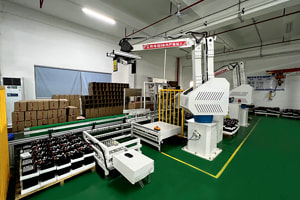Time:Feb 20, 2023 Views:616
The photovoltaic power supply is different from the traditional power supply. Its output power changes violently with the changes in environmental factors such as light and temperature, and it is uncontrollable. Therefore, if photovoltaic power generation is replaced by traditional energy to achieve large -scale grid -connected power generation. The impact of the power grid cannot be ignored.
Photovoltaic power generation has a high level of lunch in a short time, low level of force at other periods, exertion during the day, and no force at night. Energy storage technology has the characteristics of time and space that can realize electrical energy. The force is shifted to other times, the power station is reduced to the peak and reducing the abandonment.

In the process of battery Residential Energy Storage System work, the number of filling and discharge of the Residential Energy Storage System is to extend the service life of the Residential Energy Storage System. During the peak period of photovoltaic power generation, the battery Residential Energy Storage System is charged and peaks the photovoltaic power plant. After the peak of photovoltaic power generation, control the battery Residential Energy Storage System discharge, Residential Energy Storage System's discharge control can assist the volatility of smooth light and auxiliary system to maximize the energy storage effect. According to the different functions of energy storage discharge, the three working modes of Residential Energy Storage System can be divided into three working modes of the peak, peak -cut + flat, peak -cut + transfer title.
Work mode 1: peak peak
During the peak period of the photovoltaic power station, the peak -cutting is used as the application target to control the battery Residential Energy Storage System charging. After the peak period of the photovoltaic force, during the photovoltaic day force period, control the battery Residential Energy Storage System power amplification, discharge to the battery Residential Energy Storage Systemsoe's operating range is limited, and then the Residential Energy Storage System stops working to ensure that the working hours of the Residential Energy Storage System will not increase the working hours of the photovoltaic power station during the photovoltaic power station. Impact on the work arrangement of photovoltaic power stations.
Work mode 2: peak cutting+flat suppression
During the peak period of the photovoltaic power plant, the peak -cutting target controls the battery Residential Energy Storage System charging. The power fluctuations of large -scale photovoltaic power stations can be divided into two categories. One is the slow changes of the photovoltaic power station forces. For example The photovoltaic power station's contribution suddenly declined. The first round of change is large, but the change is slow; the second type of change is unpredictable and sudden. In severe cases, the force is reduced from the full hair to 30%within 1 to 2S. After the peak period of photovoltaic power, during the smooth day and night alternation, the decline of the photovoltaic power station control the Residential Energy Storage System discharge, discharge until the battery Residential Energy Storage Systemsoe's working scope limit. When it is reduced to 0, the SOE of the Residential Energy Storage System is still greater than 0.2. Controlling Residential Energy Storage System discharged to 0.2 with the rated power constant power to 0.2, and then controls the stop work of Residential Energy Storage System.

X

Appointment Experience